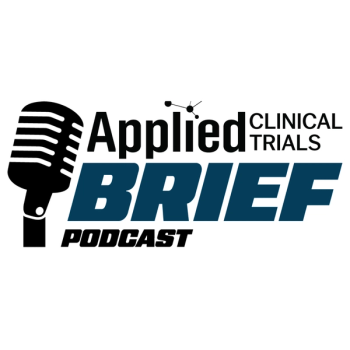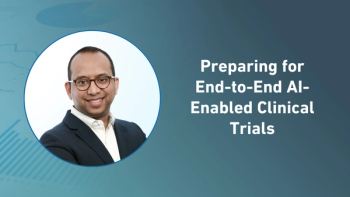Evolving CRA expectations
- Strategic Monitoring: Focus on site engagement, risk-based oversight, and patient safety.
- Digital Fluency: Navigate EDC, EMR, ePROs, wearables, and centralized dashboards.
- Data-Driven: Detect trends, anomalies, and early warning signals.
- Collaboration: Support cross-functional risk review and decision-making.
- AI Integration: Use predictive analytics to guide interventions and free time for high-impact tasks.
As clinical trials become more complex, data-rich, and decentralized, technological innovation is continuously applied to alleviate, manage, and optimize the trial process. Once defined by routine onsite monitoring visits and exhaustive source data verification (SDV), the role of the clinical research associate (CRA) is undergoing a fundamental transformation. One that simultaneously challenges and enables them, requiring deeper integration with technology.
To thrive in this new environment, CRAs must bridge the widening gap between traditional monitoring practices and the demands of modern, data-driven oversight. This means becoming fluent in multiple systems, adapting to hybrid and remote models, and embracing a more strategic, risk-based approach to monitoring.
From data checkers to strategic partners
Historically, CRAs were road warriors, tasked with traveling to clinical sites and verifying every data point collected there. This 100% SDV model placed a heavy burden on CRAs, especially as protocol complexity and the number of endpoints increased. Trials now generate millions of data points from an expanding array of sources including electronic data capture (EDC) systems, labs, imaging, ePROs, wearables and more.
CRAs were bogged down in the 100% SDV model, which increased burden for sites and diverted attention from more strategic activities like site engagement, risk identification and mitigation, and enrolment support. With the advent of innovative technology and strategies that leverage it wisely, CRAs are shifting from transactional monitors to site partners. According to recent primary survey data, sponsors increasingly expect CRAs to focus on site relationship management, risk identification, and targeted oversight, rather than exhaustive data review.
This evolution requires a new skill set. CRAs must be agile, analytical, and digitally fluent. They must understand how to review various datasets, interpret data trends, navigate multiple platforms, and collaborate across functions to ensure quality and compliance.
Managing fragmented systems
While digital tools have proliferated, integration remains limited. Connections between electronic medical records, EDC systems, and other data sources are often underdeveloped or may not exist. This forces CRAs to toggle between platforms, request data transfers and reconcile inconsistencies, which all add complexity and consume valuable time. These disparate systems also create a burden for the site.
In this environment, CRAs must become adept at managing multiple systems. They need to understand the study’s critical to quality factors, if and how data flows across platforms, identify discrepancies, and ensure that critical information is not lost in translation. This requires both technical proficiency and a strategic approach to the broader risk landscape of the trial.
Centralized monitoring and the rise of intelligent oversight
Technology is the key to smarter, more efficient monitoring—if deployed correctly. Centralized monitoring platforms aggregate data from disparate sources into a single environment, enabling real-time visibility across participants, sites, and studies. This allows CRAs and central monitors to compare site performance and identify outliers that may require additional investigations, resources or other supports. It enables them to detect early warning signals before they escalate and identify and analyze trends to predict and mitigate downstream risks.
By shifting the burden of 100% SDV to centralized systems and targeted source data review, CRAs can focus on what matters most—participant safety, data integrity and site performance. This reallocation of effort improves both efficiency and oversight quality.
Tools that empower the modern CRA
Digital tools are transforming how CRAs work. Platforms can provide a shared environment for reviewing signals, assigning ownership, and aligning on next steps. Dashboards and visualization tools make complex data intelligible, enabling CRAs to collaborate effectively with other stakeholders, data risk analysts, data managers, statisticians, medical, and clinical leads.
Key risk indicators, statistical monitoring, and pre-specified acceptable levels as quality tolerance limits serve as guardrails, flagging anomalies and prompting timely interventions. These tools support scalable, adaptable clinical data risk management strategies that can be tailored to any study design or therapeutic area.
Importantly, these platforms are increasingly system-agnostic, capable of integrating with sponsor-preferred technologies. This flexibility ensures that CRAs can work within familiar environments while benefiting from enhanced oversight capabilities.
Collaboration and governance: The human side of digital oversight
While technology provides the infrastructure, effective clinical data risk management depends on clear governance and cross-functional collaboration. Risk ownership is distributed across clinical operations, data management, central monitoring, and medical review. CRAs play a central role in this ecosystem, serving as the connective link between sites and sponsors.
Regular quality and risk review meetings, supported by shared visual tools, enable teams to interpret data collectively, assess site and study specific mitigation strategies, and adjust oversight in real time. CRAs contribute critical context from actual field operations, helping to validate signals and inform decisions.
Governance frameworks and integrated, cross-functional data review plans must clearly define roles and responsibilities such as who is reviewing which data, who owns issue triage, when to escalate, how to interpret signals, when to act, and how. CRAs must be equipped with the right tools and provided the training and support necessary to operate confidently and foster stronger, more efficient site relationships that ultimately improve trial outcomes.
Looking ahead: AI and predictive analytics
A key component of the future of clinical data risk management lies in predictive analytics and artificial intelligence (AI). These technologies can detect patterns and anomalies that are opaque to manual review, enabling earlier risk detection and smarter resource allocation.
CRA oversight remains essential. AI may flag a site with an unusual spike in adverse events, but the CRA must determine whether the issue stems from collection process errors, data entry errors, protocol deviations, or genuine safety concerns.
As these tools mature, CRA resources will be freed to focus on more impactful aspects of their role, including supporting high-risk sites, ensuring enrolment, resolving complex issues, and ensuring that trials stay on track.
Enabling the next generation of CRAs
The CRA role is no longer defined by checklists, page counts, and travel schedules. It is a dynamic, strategic function that requires digital fluency, cross-functional collaboration, and a deep understanding of data flows and risk-based monitoring.
To support this evolution, sponsors and contract research organizations must invest in CRA enablement. This includes robust training in digital tools, data interpretation, and risk-based methodologies as well as access to integrated platforms that streamline workflows and enhance visibility. These investments must be backed by governance structures that clarify roles and support proactive oversight.
With the right technology and support, CRAs can continue their evolution into powerful agents of trial success that bridge the digital divide, strengthen site relationships, and drive smarter, more resilient monitoring strategies.
Helen Yeardley, Executive Vice President, Clinical Operations, ICON plc






.png)



.png)



.png)
.png)
